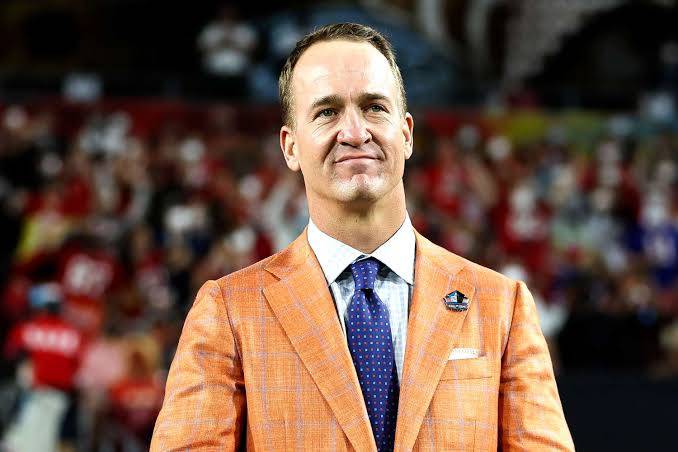‘Two Major Problem Contracts’: Oilers Navigating Salary Cap Success Amid Lingering Challenges
The Edmonton Oilers have made significant strides in managing their salary cap situation, demonstrating an ability to navigate one of the NHL’s most complex and restrictive financial environments. However, as recent analyses reveal, the organization is far from perfect in this regard, grappling particularly with two major problem contracts that continue to cast a shadow over the team’s overall cap flexibility. While the Oilers have taken commendable steps to balance competitiveness with fiscal responsibility, these lingering contract issues underscore the ongoing challenges of roster construction in today’s NHL.
The NHL salary cap, designed to ensure competitive parity among teams, creates a landscape where every dollar matters. For franchises like Edmonton, which boast star players commanding top-tier salaries, managing cap space effectively becomes an intricate balancing act. The Oilers, led by superstars such as Connor McDavid and Leon Draisaitl, face the daunting task of building a roster around these cornerstone players while staying within the salary cap’s rigid constraints. Recent reports and insider commentary highlight that despite doing well in many areas, Edmonton’s cap situation is complicated by two contracts that are widely viewed as problematic.
The nature of these problem contracts revolves around a combination of factors: length, cap hit, performance relative to salary, and the inflexibility they impose on team management. Such contracts limit the Oilers’ ability to pursue additional high-impact players or make midseason adjustments without risking cap penalties. While the Oilers have demonstrated savvy maneuvering in trades, buyouts, and extensions, the financial weight of these contracts has prevented the team from achieving optimal cap health. This has sparked discussions among analysts, fans, and team insiders about how these contracts affect Edmonton’s present and future.
One of the primary issues with the problematic contracts lies in their structure. Long-term deals with high average annual values (AAV) can become burdensome if a player’s performance declines or if injuries impact their ability to contribute. These contracts often become albatrosses, tying up cap space that could be better allocated to emerging talent or strategic acquisitions. The Oilers, like many NHL teams, have experienced the pitfalls of such deals in the past, and the current situation serves as a reminder of the delicate nature of contract negotiations in professional hockey.
Despite these challenges, the Oilers’ management deserves credit for their overall approach to cap management. General Manager Ken Holland and his staff have taken decisive actions to improve the team’s financial flexibility. Moves such as restructuring contracts, trading players with cumbersome deals, and maximizing value from salary retention have helped the Oilers maintain a competitive roster. These efforts have allowed Edmonton to stay in the playoff conversation and remain a contender in the Western Conference. However, the presence of the two problematic contracts tempers the optimism, highlighting areas where further improvement is needed.
The impact of these contracts extends beyond just the numbers on the cap sheet; they influence roster decisions, player development, and even team morale. When cap space is limited by problematic contracts, the coaching staff may have fewer options to deploy ideal line combinations or experiment with player roles. Younger players waiting in the wings might find fewer opportunities if the team is forced to retain veterans with high salaries. Additionally, pressure mounts on the organization to find creative solutions to mitigate the effects of these contracts, whether through future trades, buyouts, or contract renegotiations.
One of the contracts in question involves a player whose production has not aligned with the hefty salary cap hit, raising concerns about return on investment. This disparity creates tension between the need to honor contract commitments and the desire to enhance team performance. Analysts have pointed out that in such scenarios, the team risks being hamstrung by financial commitments that don’t yield commensurate on-ice results. The Oilers must weigh the benefits of maintaining stability against the drawbacks of limited flexibility, a difficult balance that tests the acumen of management.
The second major problem contract similarly contributes to Edmonton’s cap woes, compounding the limitations imposed by the first. Combined, these contracts represent a significant portion of the Oilers’ salary cap ceiling, constraining the organization’s ability to pursue new talent or make necessary adjustments midseason. The financial commitment involved also complicates future contract negotiations with other players, as the team must consider how to allocate limited resources effectively. This situation underscores the ripple effect that individual contracts can have on overall team building and strategic planning.
While the Oilers continue to manage these challenges, their approach reflects a broader trend across the NHL, where many teams grapple with the complexities of long-term contract management. The league’s salary cap system rewards strategic foresight and penalizes miscalculations, making the process of constructing a competitive roster a high-stakes endeavor. Edmonton’s experience highlights the importance of balancing immediate competitive desires with prudent financial planning, a challenge that requires skillful negotiation and sometimes difficult decisions.
Looking ahead, the Oilers face critical junctures in determining how to address these problem contracts. Potential solutions could include seeking trade partners willing to absorb cap hits in exchange for assets, exploring buyout options if applicable, or attempting contract restructuring to reduce immediate cap burdens. Each path carries risks and rewards, and the choices made will significantly impact the team’s trajectory. Fans and analysts alike will be watching closely as Edmonton navigates these complexities, hopeful that the organization can continue to build a championship-caliber roster despite the constraints.
The Oilers’ predicament also shines a light on the broader theme of player valuation in the NHL. Determining the appropriate salary for a player involves assessing past performance, projected future contributions, injury history, and market conditions. Even the most astute management teams can find themselves locked into contracts that become problematic due to unforeseen circumstances. Edmonton’s situation serves as a case study in the dynamic and often unpredictable nature of player contracts and their long-term effects on team composition.
From a fan perspective, the knowledge of these problem contracts can evoke frustration but also understanding of the complexities involved in team management. While fans desire immediate success and roster improvements, they also recognize that cap management is a multifaceted challenge with no easy solutions. The Oilers’ ability to remain competitive despite these financial hurdles speaks to the resilience of the team and the leadership’s commitment to finding paths forward. It also reinforces the importance of supporting management decisions that balance short-term goals with sustainable success.
In the context of the current NHL season, the Oilers’ salary cap situation adds an additional layer of intrigue to their on-ice performance. As the team battles for playoff positioning, the financial backdrop influences roster moves, player ice time, and strategic planning. Coaches must maximize the contributions of existing players while management seeks avenues to enhance depth and address weaknesses without breaching cap limits. The tension between financial constraints and competitive ambition creates a dynamic environment that tests the organization’s adaptability and creativity.
In summary, while the Edmonton Oilers have done well managing their salary cap overall, the presence of two major problem contracts remains a significant hurdle. These contracts constrain the team’s financial flexibility, impact roster decisions, and challenge management’s ability to optimize the roster. However, the Oilers’ proactive approach to cap management and ongoing efforts to address these issues demonstrate a commitment to maintaining competitiveness. As the team moves forward, navigating these contractual challenges will be crucial in determining Edmonton’s ability to build a championship contender capable of meeting the high expectations of its passionate fanbase.



